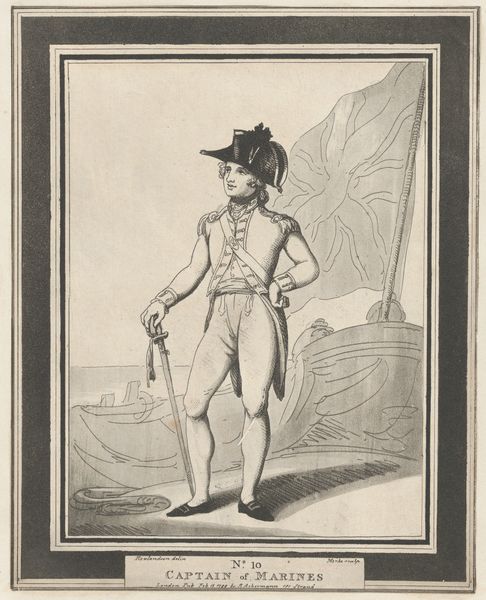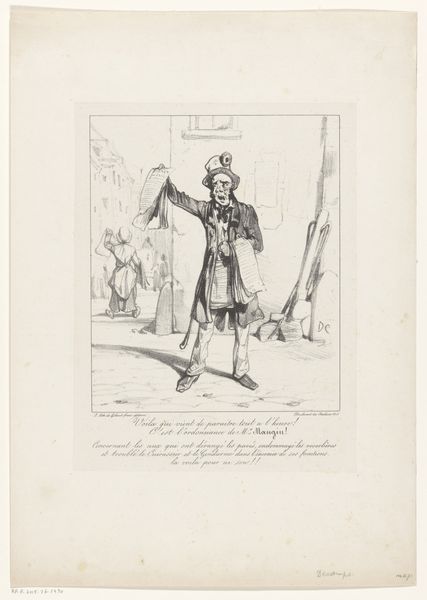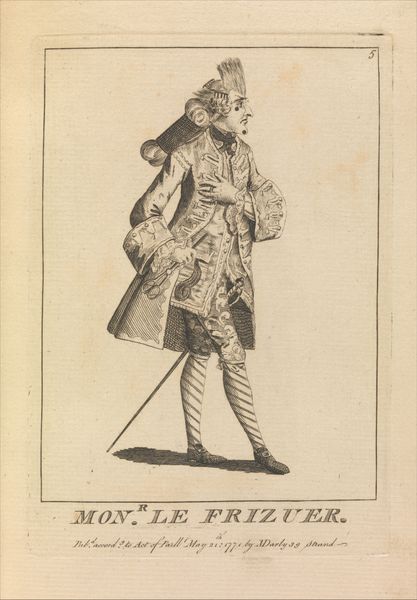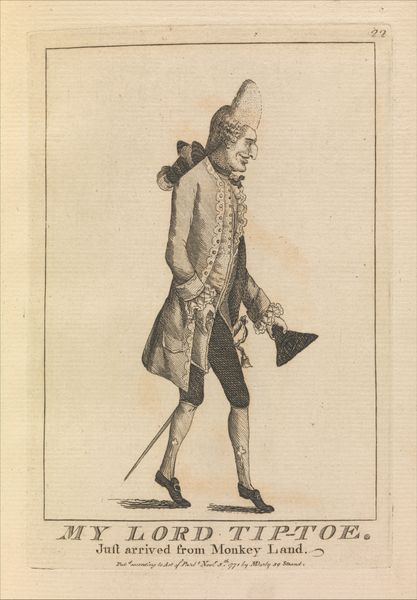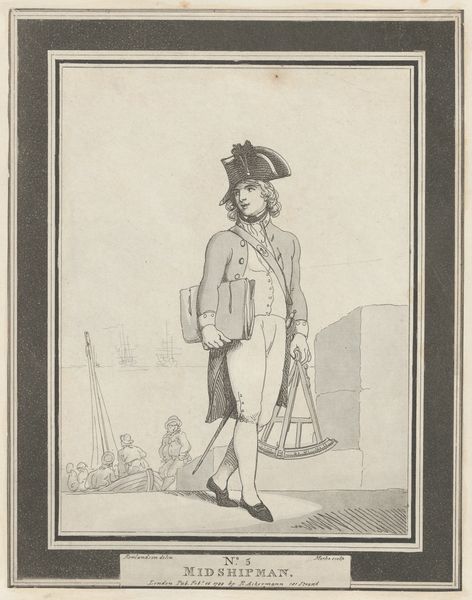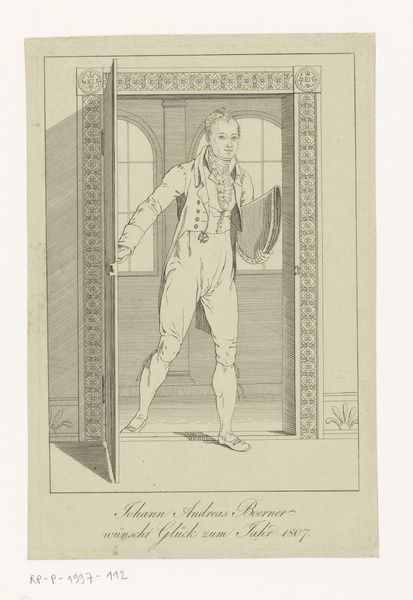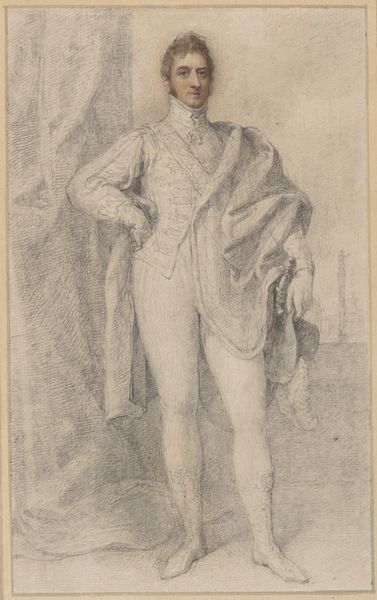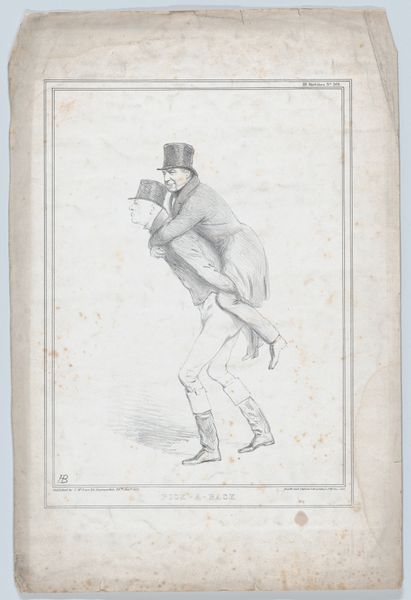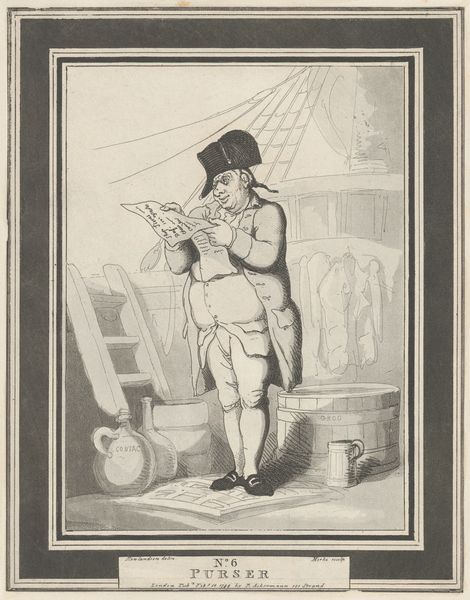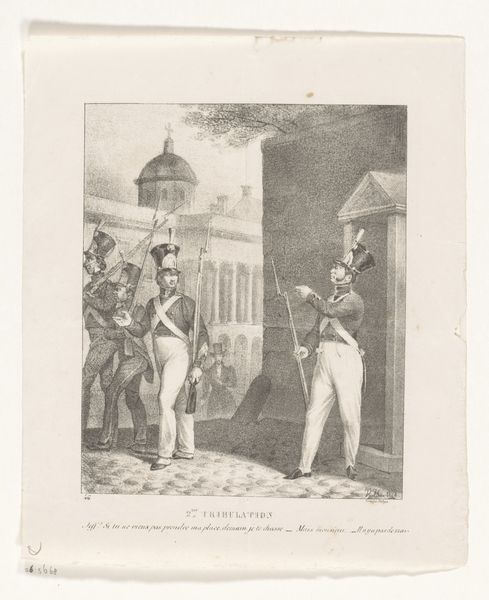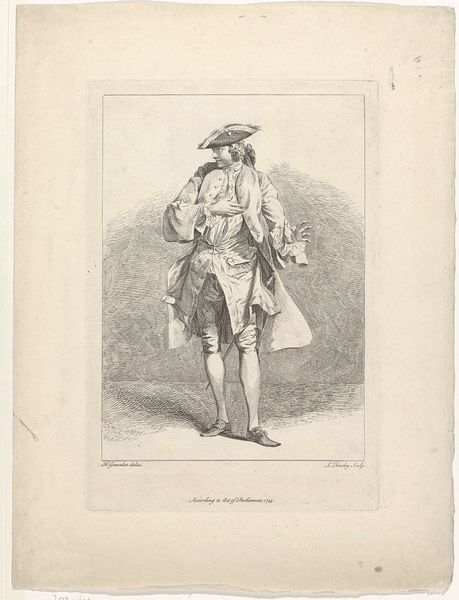
drawing, print, engraving
#
portrait
#
drawing
#
neoclacissism
# print
#
caricature
#
caricature
#
line
#
history-painting
#
engraving
Dimensions: Sheet (trimmed and inset): 10 1/8 × 8 1/16 in. (25.7 × 20.5 cm)
Copyright: Public Domain
Curator: This engraving, simply titled "No. 7: Lieutenant", dates back to 1799. Henri Merke is credited as the artist. Its permanent home is here at The Met. Editor: There's a jaunty nervousness to him, don’t you think? He's standing on what appears to be a ship, one hand boldly extended and the other tightly gripping his sword. I'd say he looks like he's just been given some alarming news. Curator: It is, to put it mildly, a caricature. Look closely at the exaggerated slenderness of his limbs, contrasted with his prominent… well, you see. It’s less about idealised portraiture and more about social commentary. During this period, visual satire was gaining prominence, offering sharp critiques of military figures and the aristocracy. Editor: He's caught somewhere between elegance and complete ridiculousness. The line work itself adds to the effect. It's incredibly precise but also seems to teeter on the edge of absurdity. Those cannon barrels feel imposing compared to his tiny little feet. Curator: Merke positions him against a naval backdrop, with a ship's mast visible, and what seem to be fortifications and artillery suggesting naval conflict. So, the humour derives from contrasting his self-important stance with the reality of war. He is presented almost as if he's performing for an audience. Editor: Performing – that’s precisely the right word. The more I look at this "Lieutenant," the more I get the sense he's posturing. Maybe even play-acting at being a soldier in the face of an unseen foe. The composition, his stance— it all builds to this delicious tension between how he sees himself and how the world… or Merke… sees him. Curator: These images would have circulated widely in print form, accessible to a growing public. Satire like this helped shape perceptions of power and military engagement, turning leaders into subjects of public amusement. Editor: It’s thought-provoking how Merke's work allows us to consider not only this particular "Lieutenant," but also the broader socio-political atmosphere and how such figures were both regarded and perhaps ridiculed by their contemporaries. Curator: I'd say we can agree, there is quite a story embedded in the ink of this satirical drawing. Editor: Yes, and one I am all too pleased we were able to give voice to.
Comments
No comments
Be the first to comment and join the conversation on the ultimate creative platform.

